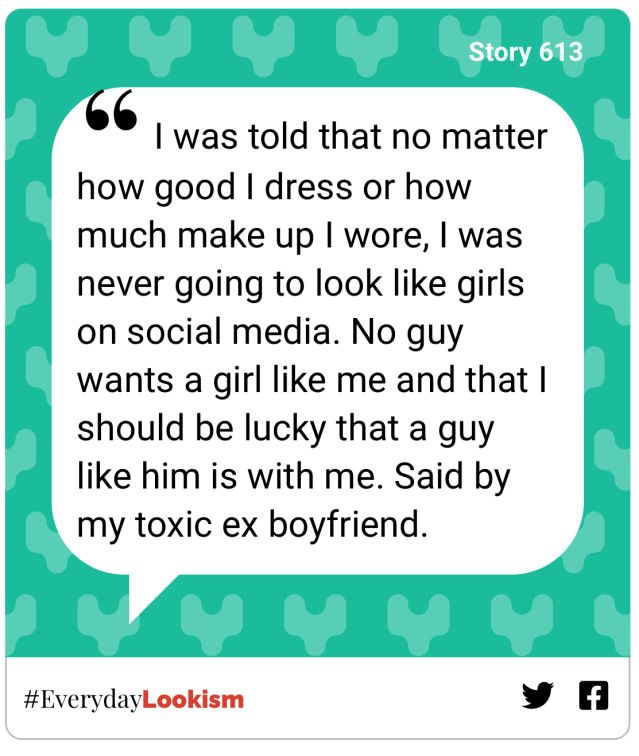Anxiety
Making Up to Make the Grade
How appearance anxiety is affecting the mental health of young women and girls.
Updated March 8, 2024 Reviewed by Tyler Woods
Recently, a school in Kent, England, changed its uniform policy to allow students to wear false eyelashes, citing mental health reasons, as students were refusing to come in without them.[1] Some parents were horrified, asking where the loosening of rules would end, while others were supportive, recognising the extent of the peer pressure. Whatever you think of this judgment, in our visual and virtual culture, how young women look is crucial to their sense of self, to their identity, and to who they think they are. Having the right body—with the right cures in the right places and the right "Instagram face"—is now who we think we are, such that “our bodies are ourselves.”[2]
In the Girls’ Attitudes Survey 2023 from Girl Guiding U.K., 52 percent of 11- to 21-year-olds said they often feel ashamed of how they look. That is over half of girls and young women admitting that they feel like they don’t measure up. This is, in part, driven by our visual and virtual culture. In the same study, 67 percent of 11- to 21-year-olds said they “sometimes feel ashamed of the way [they] look because [they’re] not like girls and women in the media,” and 48 percent said they would feel safer online if there were fewer images that made them feel they “had to look a certain way.”[3]
As our culture becomes image-based, how we look matters. We are exposed to hundreds of images of bodies and faces—celebrities, influencers, peers—on a daily basis. This diet of images is of a particular type of idealised and homogenised body and face. The ‘real world’ bodies and faces have been shaped by diet, exercise, and surgery, and the images are posed, filtered, and edited. We have written previously about how social media perpetuates the beauty ideal and how the global beauty ideal pressures women in particular. We internalise the beauty ideal of smooth, firm, thin, and young from these images, even though we know they are not real, or at least not attainable without work.[4] This is shown clearly in the stories that are shared in our #EverydayLookism project, where people share their stories of lookism in order to end body shaming:[5]

These stories are typical and representative of how young women feel. Knowing that no one looks like their Instagram does nothing to reduce the pressure. The diet of ideal images shapes what we desire and who we think we should be. The gap between how we look in the mirror and how we, and others, look in their ideal images is dramatic. We can never achieve the Instagram ideal in real life, we constantly feel like we don’t measure up, and our mental health suffers. There is an epidemic of body image anxiety among young women who are doing more to look ‘normal.’ The rise of Instagram face shows that the beauty ideal is narrowing and what work is needed to simply measure up is increasing.[6] The American Society of Plastic Surgeons suggests that teenagers who undergo plastic surgery often do so to “fit in with peers,” not to stand out.[7]
It's hardly surprising that young women are adding more to their beauty routine, which may include eyelashes, HD eyebrows, gel nails, and preventative botox. Nor is it surprising that young women are skipping school if they don’t look how they think they should, or are prioritising beauty treatments over their education. They are growing up in a very different world, where how they look determines not only how they will be treated, but who they think they are. We urgently need to better acknowledge the relationship between young women’s mental health and the visual and virtual culture they have grown up in.
Appearance worries of young women are not trivial or unimportant. One in six 14- to 21-year-old girls in the U.K. have missed school or work because of worries about their appearance, according to a Plan International survey.[8] Recognising how appearance matters to young women’s mental health is the first step in addressing it. Young women and girls are growing up in an image-based culture, with smartphones and social media as key sources of creating and communicating identity. This is a brave new world.
Written by Heather Widdows, University of Warwick, and Jessica Sutherland, University of Warwick
References
[1] Harding, E. (2024) School sparks row by making false eyelashes 'part of its uniform' amid peer pressure from pupils - as parents slam 'society run by children', Daily Mail. Available at: https://www.dailymail.co.uk/news/article-13138647/School-changes-uniform-rules-allow-pupils-wear-fake-eyelashes-mental-health-considerations.html
[2] Widdows, H. (2020) Perfect Me: Beauty as an Ethical Ideal, Princeton University Press.
[3] Girl Guiding (2023). Girls’ Attitudes Survey 2023. Available at: https://www.girlguiding.org.uk/globalassets/docs-and-resources/research-and-campaigns/girls-attitudes-survey-2023.pdf
[4] Widdows, H. (2020) Perfect Me: Beauty as an Ethical Ideal, Princeton University Press.
[5] Everyday Lookism website. Available at: https://www.everydaylookism.com
[6] Tolentino, J. (2019). The Age of Instagram Face, The New Yorker. Available at: https://www.newyorker.com/culture/decade-in-review/the-age-of-instagram-face
[7] American Society of Plastic Surgeons. Briefing Paper: Plastic Surgery for Teenagers. Available at: https://www.plasticsurgery.org/news/briefing-papers/briefing-paper-plastic-surgery-for-teenagers
[8] Plan International (2019). Society Needs a Makeover. Available at: https://plan-uk.org/international-day-of-the-girl/society-needs-a-makeover


